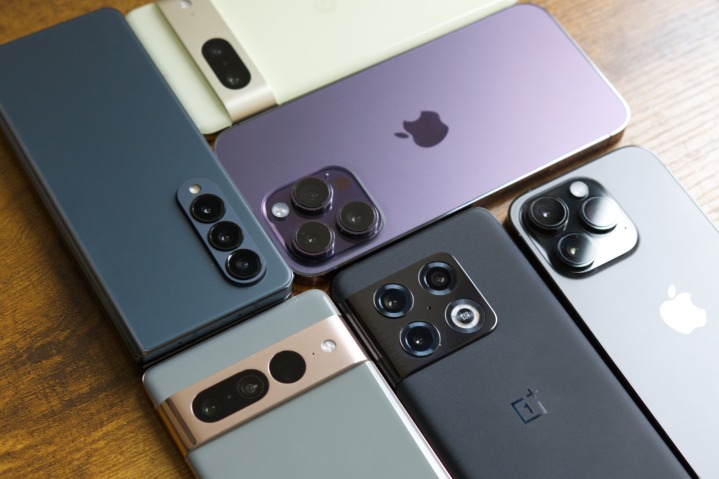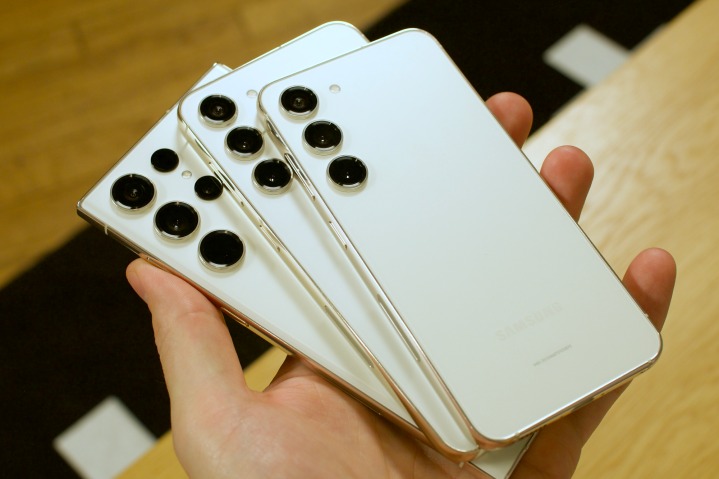This small detail reveals how the Galaxy S23 secretly ‘beats’ the iPhone in a way that no one expected
- Tram Ho
At the recent Unpacked event, Samsung announced the Galaxy S23 series of phones including the S23, S23 Plus and S23 Ultra versions. Although only the Ultra version has the brand new 200-megapixel main camera, the 50MP lens on the S23 and S23 Plus is still nothing to blame. And all S23 devices use Snapdragon 8 Gen 2, the same floating camera design, and come in the same four basic colors: black, cream (white), green and lavender.
But, the one thing that most of these models have in common is the base memory, which starts at 256GB for the S23 Plus and S23 Ultra. The regular S23 model still starts at 128GB, but the two larger versions now have 256GB of default storage. And the fact that most models have a starting storage capacity of 256GB is a big, albeit slightly subtle, change, as it will impact the entire use of the product over its lifecycle.
64GB and 128GB are no longer enough

Even though it’s 2023, it’s not uncommon to see smartphones on the market still being sold with either 64GB or 128GB of base storage. But for most users, they really aren’t enough anymore.
Let’s start with 64GB. Given that today’s mainstream Android operating systems are taking up about 14 -15 GB of space, that means users only have about 49 GB of actual storage to use. Of course, people can expand the storage using a microSD card, but this is an additional cost and not everyone wants to spend the extra money just to get the most out of their new device.
Today, most people use smartphones to take photos and videos, listen to music, watch TV and movies, play games, and even work with large files. Over time, unless you’re an ultra-minimalist, that storage space will quickly get eaten up by photos and videos, files, and apps. Games are getting more and more graphically intensive, and now just one of them can eat up several gigabytes. And then there are updates to apps and the operating system itself, which can range from a few hundred megabytes or to more than a gigabyte.
While some say they’re fine with 64GB, having a near-full internal storage can also slow down your device, resulting in suboptimal experiences. And even if you’re careful with how many photos you take or how many apps and games you download, there’s still cached data in the app. Some popular messaging apps are even storing everything from photos to users’ messages on their own devices, and it’s rare for someone to delete it all thinking one day they’ll need to find it. again. Over time, messaging apps will take up more and more space over time, which can lead to slow performance or lag.
128GB offers a bit more space than 64GB, but that’s still not enough. Even with 128GB, if you want to get the most out of your device, you may still need to be cautious about using it however you want. And obviously, in the context of the general economic situation is going down, the need to replace the phone will gradually decrease, it is clear that many users will consider a larger capacity when deciding to buy a smartphone that is more capable. It will probably stick with you for a long time.
Apple, Google and others need to make 256GB the ‘new normal’

As of now, both Apple and Google offer 128GB as initial storage on the iPhone 14 and Pixel 7 product lines. Apple increases the storage choice to 1TB on the iPhone 14 Pro models, and Google increases it. to 512GB on Pixel 7 Pro. However, what users have to trade off is the price difference is quite large. It would be better for both Apple and Google, as well as Samsung and other manufacturers, to simply get rid of the tiny 128GB storage option and choose 256GB as the starting point.
For a simple example, iPhone 14 Pro 128GB has been hindered in functionality due to memory size. If you want to shoot ProRes video, the 128GB iPhone 14 Pro can only support 1080p at 30fps, while the 256GB/512GB/1TB options both allow standard 4K ProRes recording at 30 frames. frames/second.
And if you want to shoot 4K ProRes, a minute of footage will also be over 1GB. That is, even if the 128GB model can record 4K ProRes video, the storage space on it will eat up very quickly.
It’s unclear why Apple would release a 128GB version of the “Pro” iPhone if this in turn hinders its potential, as to many users it seems like a waste. Or this can also be a way for users to choose the version with a higher capacity, thereby maximizing profits for the company.
Google doesn’t seem to have any limits on 128GB versions of its Pixel phones. But considering the impressive photography capabilities of the Pixel 7, this storage space may not be enough, besides downloading loads of apps and games from the Google Play Store.
Samsung’s great change, especially without the price increase

For some people, 128GB can be a significant amount of space. But reality has proved that these seemingly “significant” limits often never satisfy the crowd. Like how 32 GB then 64 GB used to be the norm.
That’s why Samsung offering 256GB of storage as a starting option is such a great change and many companies should follow suit. While the Galaxy S23 entry-level Galaxy S23 starts at 128GB and can only go up to 256GB (users will need to buy an S23 Plus or S23 Ultra for more storage), 256GB is definitely the right amount of space. suitable for everyone (because no one criticizes less).
What’s wrong with users being able to enjoy the features of their phone without having to worry about getting the dreaded “memory full” notification? It’s a win-win, especially since the price of this year’s S23 lineup remains the same as last year.
Check out Digital Trends
Source : Genk
